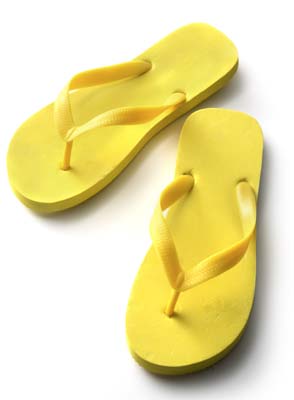It’s All About the Shoes

Flip-flops seem to be the template of choice for shoe designers today. They’re beaded, shelled, sequined, plasticized; they come in leather, patent leather, wood, recycled burlap, rubber from recycled tires, and who knows what else. You can get them at Saks, you can get them at the 99 Cent store. They’ll have a different look and flavor, but they’ll still exude that quintessentially California good weather, no-worries vibe the consumers crave.
If your feet could talk, they would probably tell you to leave your flip-flops in the closet more often. It seems they just aren’t great for your feet or your ankles, and since your body sits atop your feet and ankles, and one-quarter of all your bones are located in your feet, flip-flops aren’t going to be great for your body period. People who wear them a lot tend to complain about foot pain, leg pain, and sometimes even back pain.
Graduate students at Auburn University did a study on the effects of flip-flops that was released in June. They got 39 college students to walk on a special platform wearing flip-flops and then wearing athletic shoes. What they discovered is, when people wear flip-flops, they take shorter steps, bring their feet down with less vertical force, and grip with the toes more, ostensibly to keep the shoe from falling off. In fact, a person’s gait in flip-flops is basically different. It’s not such a big deal when worn in moderation, but lately, people are wearing them every day-winter, spring, summer, and fall.
If you find a flip-flop with a strap in back, that would be an improvement. The kinds that can be scrunched up in a ball in your hand would have the least support of all. The American College of Chiropractic Consultants endorses a flip-flop made by Okabashi, but I bet-and I’m just guessing here-they don’t come with beads or sequins.



